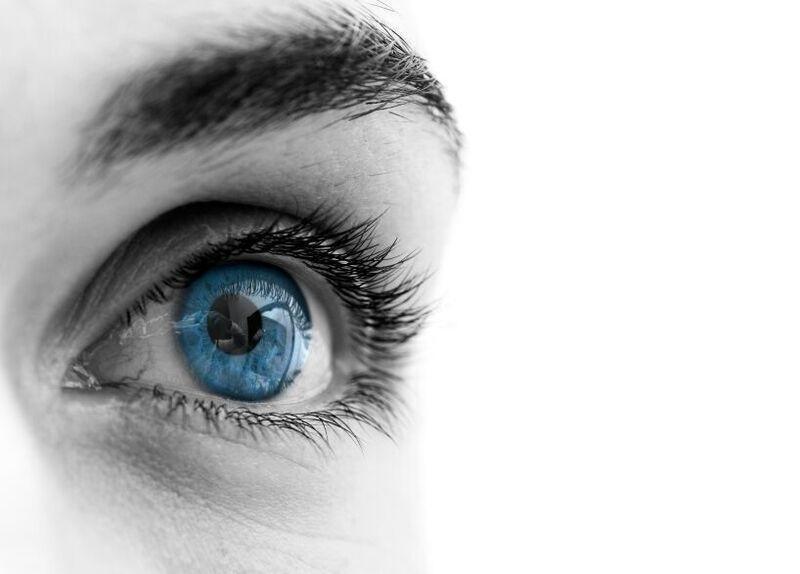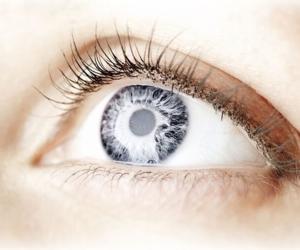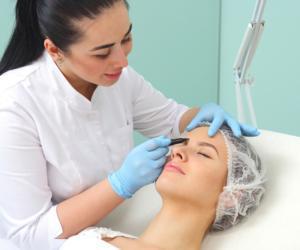Blepharoplasty Complications

Blepharoplasty is a surgery done to correct a condition of droopy eyelids involving excessive muscle, skin, and fats in the eyelids.
While you age, the muscles supporting your eyelids wear because your eyelids stretch. This results in excessive fats around the eyelids that make them sag, or be droopy on the upper side. It can also result to sacs under your eyes. Apart from making you seem old, when the sagging is severe it also affects your peripheral vision. This particularly interferes with the outer and the upper side views. Blepharoplasty therefore can be recommended to eliminate or control these conditions and make your eyes young and alert.
Usually, blepharoplasty is carried out as an outpatient operation. You need to talk to your doctor to find out if blepharoplasty is right for you. You can also ask him/her about the risk and benefits associated with blepharoplasty.
Why the Surgery Is Done
Your doctor may recommend blepharoplasty for you if your eyelids interfere with your vision and appearance because they are sagging or droopy. If there are excessive tissues on the lower or upper lid, they are removed so that you look young and improve your vision.
You are likely to have a blepharoplasty if you:
- Have droopy or baggy upper eyelids.
- Have excess skin on the upper eyelids that affects your vision.
- Have droopy lower lids which have a white effect on your iris.
- Have bags beneath your eyes.
- Have excess skin on the lower eyelids.
Blepharoplasty can be undertaken with other procedures at the same time. You may have a skin resurfacing, a facelift, or a brow lift.
Your insurance cover depends on the reason why you are undergoing the surgery. If you are undergoing the surgery to repair your vision, you may be covered. If you only want to improve your appearance, then you may not be covered. It simply depends on the policies of your health insurance.
Risks
Like any other surgery, eyelid surgery has associated risks. This may include:
- Bleeding or infection
- Irritation and dry eyes
- Eyelid problems
- Difficulty closing the eyes
- Muscle injuries
- Scarring
- Discoloration of the skin
- Blurred vision
- Reaction to anesthetics
- Blood clotting
- Pulmonary and cardiac conditions
- Need for another surgery resulting from the first one.
Discuss with your doctor to know what risks are involved to you particularly. It is important to understand the risks and benefits that are involved during this surgery so that you weigh the options.
How You Prepare
Prior to your blepharoplasty surgery schedule, you have to make an appointment with an ophthalmologist and a plastic surgeon to discuss the following:
Your Medical History
The plastic surgeon will ask you questions regarding any surgeries you’ve had before. Your surgeon will also ask you about the current use of medication, supplements, drugs, tobacco, and vitamins. The conditions inquired may include:
Your Expectations
It is important that you know whether the surgery is likely to help or improve your condition. Your surgeon will discuss with you the expectations and likely outcome of the surgery. The surgeon will also answer any other questions you may have about the surgery.
Prior to the surgery, you will undergo the following:
- A physical examination – You will undergo a physical examination. Here the surgeon measures parts of the eyelid and the tear production.
- A vision examination – Because of the insurance, you will need to undergo a vision examination and peripheral vision. This may help you get an insurance claim.
- Eyelid photography – To assess the immediate and long term effects that the surgery may have on you, you will have you eyes photographed from various angles. This will also help you in the insurance claim.
You may also be asked to:
- Stop taking blood thinners like ibuprofen, aspirin, and naproxen at least 2 weeks from the day of the surgery. Discus with your doctor to know the type of medicine you can take prior to the surgery.
- Stop smoking at least 2 weeks to surgery. You may also be asked to quit after the surgery as your healing is affected by smoking.
- Arrange for someone to take you home after the surgery. You will not be allowed to drive yourself home. You should also arrange to have someone with you at home for 24 hours after the surgery.
What You Can Expect
Blepharoplasty is always an outpatient program. You are injected with anesthetics and sedatives to help you relax. You may feel groggy because of this.
During the Procedure
If the surgery is meant to be on both eyelids, your surgeon operates the upper eyelid first. The surgeon makes an incision along your eyelid fold and removes extra skin fats and muscle. Once finished, the surgeon will close the incision.
On your lower eyelid, the surgeon makes an incision beneath your lashes in the natural crease of your eyes or in your eyelid. The surgeon either removes or spreads the fats, the skin, or the muscles and then closes the incision.
In case your eyelid droops near your pupil, the surgeon may carry out an operation known as ‘ptosis’ alongside your blepharoplasty to correct the condition.
The surgery usually needs less than 2 hours. However, the time depends entirely on the location and size of tissues that need to be moved.
After the Procedure
You are sent to a recovery room where you are monitored immediately after surgery. If everything is alright, you may be discharged after this.
You may experience the following symptoms temporarily after surgery:
- Pain
- Swollen or bruised eyes
- Puffy or numb eyelids
- Watery eyes
- Redness on the incision
- Double vision
- Sensitivity to light
- Vision blurring (due to the ointment used to lubricate your eyes).
The following steps may be recommended by your doctor after the surgery:
- Use the prescription of eye drops and ointments given.
- Clean your eyes gently.
- Avoid strenuous activities like swimming or weight lifting.
- Do not smoke.
- Do not rub your eyes.
- Do not use contact lenses for 2 weeks after the surgery.
- Wear sunglasses to protect your eyes from wind or sun.
- Raise your head above the chest while sleeping.
- Do a follow up appointment to have your stitches removed.
- Avoid blood thinners after your surgery.
Call your doctor immediately in case you notice the following:
- Shortness of breath
- Pain in the chest
- Heart rate is altered
- Persistent eye pain
- Problems with vision
- Bleeding
Results
In most cases, the surgery is usually successful and patients express their satisfaction. Patients feel more confident of their appearances, some feel rested and youthful. Some people have this surgery only once. However, the droopy eyes may return for some.
After the surgery, it takes approximately 6 months for the scars to fade away. Do not overly expose your eyelids to the sun. Do not engage in vigorous activities for the next 14 days unless first consulting your doctor. Avoid exposure to dust, water, or other cosmetic chemicals. If you have to go out on bright sunny days, always wear sunglasses. You should wear them for a period of one year after the surgery.
















